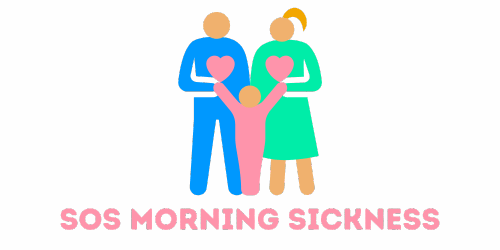In today’s world, single moms are the unsung heroes of parenting, juggling work, kids, and the occasional glass of wine like pros. But why are there so many of them? It’s not just a plot twist in a romantic comedy; it’s a reflection of changing social dynamics and evolving family structures.
From unexpected life changes to personal choices, the rise of single motherhood is reshaping the family landscape. With humor and resilience, these women tackle the challenges head-on, proving that they can thrive—often with a little chaos and a lot of love. So let’s dive into the reasons behind this growing phenomenon and celebrate the strength of single moms everywhere.
Table of Contents
ToggleUnderstanding Single Motherhood
Single motherhood often arises from a blend of societal shifts, economic realities, and personal decisions. Changing views on marriage and relationships contribute significantly. Many women prioritize education and career advancement, sometimes delaying or choosing not to marry. Statistics show that nearly 80% of single-parent families are led by women, highlighting this trend’s prevalence.
Economic factors also play a crucial role. Women’s increasing participation in the workforce enables them to support families independently. The U.S. Census Bureau reports that approximately 23% of children live in single-parent households, marking a significant demographic shift. Accessibility to social services and community support assists single mothers in navigating challenges that arise from parenting alone.
Life events such as divorce or the loss of a partner lead many into single motherhood unexpectedly. Approximately 50% of marriages end in divorce, revealing a potential trajectory to single parenting. Some women become single mothers by choice through methods like adoption or artificial insemination. These choices reflect a growing acceptance of diverse family structures.
Cultural acceptance plays into the dynamics of single motherhood. Society increasingly recognizes and respects the strength of single moms, affirming their roles as primary caregivers. Local support groups and online communities also provide essential networks, fostering resilience and shared experiences among single mothers.
Understanding the complexities behind single motherhood offers insight into its nuances. Recognizing the obstacles and triumphs shapes a fuller picture of their journey, illustrating why so many women navigate this path today.
Social Factors Contributing to Single Moms
Single motherhood arises from various social factors that shape family dynamics today. Economic challenges and cultural shifts play significant roles in this trend.
Economic Challenges
Economic hardships often lead to increased single motherhood. Many women face high living costs, necessitating workforce participation for financial stability. With 80% of single-parent households led by women, the ability to support families independently becomes crucial. Job markets often do not offer adequate wages, compelling these mothers to seek multiple income sources. Furthermore, affordable childcare options remain limited, adding stress to single-parent families. These economic realities create environments where single motherhood thrives, as many women choose or find themselves in this situation due to financial constraints.
Cultural Shifts
Cultural attitudes toward family structures have shifted markedly. Society increasingly recognizes the strength of single moms, embracing diverse family dynamics. Women prioritize education and career advancement over traditional marriage timelines, influencing their family planning choices. Acceptance of single motherhood has grown, with many celebrating the independence it can bring. This cultural openness contributes to the rising number of single mothers, as women feel empowered to make choices that suit their lives. Changing perceptions help foster environments where single mothers can thrive.
Personal Reasons Behind Single Motherhood
Single motherhood arises from varied personal circumstances that shape women’s lives. Understanding these dynamics provides insight into the complexities single mothers face.
Relationship Dynamics
Relationship changes often lead to single motherhood. Many women experience divorce or separation, altering their family structures significantly. These transitions can arise from incompatibility, infidelity, or other issues. Interestingly, a growing number of women choose to co-parent outside traditional relationships, embracing the idea of shared parenting while living separately. Statistics show nearly 80% of single-parent households in the U.S. are led by women, illustrating how common these shifts have become. Emotional factors, such as the pursuit of a healthier environment for children, often motivate women to forge new paths.
Choice and Empowerment
Choice plays an essential role in the rise of single motherhood. Many women embrace the independence that comes with being solo parents, opting for adoption or artificial insemination as methods to create families. The prioritization of education and career has empowered women to make these decisions confidently. Women’s increasing presence in the workplace bolsters their financial independence, enabling self-sufficiency. Likewise, cultural acceptance of various family structures fosters an environment where single motherhood is celebrated rather than stigmatized. This cultural shift allows women to reclaim their narratives, highlighting strength and resilience.
Impact of Single Motherhood on Children
Single motherhood influences children’s development in various ways. Children raised by single mothers may experience emotional and social challenges. Research shows they often face higher rates of anxiety and depression compared to peers in two-parent households.
Academic performance also suffers in some cases. Kids from single-parent families encounter more difficulties in school, which can impact their long-term educational outcomes. Data indicates that about 23% of children live in single-parent households, highlighting the need for additional support.
Social skills develop differently too. Children of single mothers often learn to navigate relationships on their own, which can foster independence. This independence may lead to strong problem-solving skills in their future relationships.
Financial instability often characterizes the environment in which these children grow up. Many single mothers work diligently to provide, but limited income can create stress. Studies reveal that economic hardship correlates with health issues and access to resources for single-parent families.
Community support plays a crucial role in mitigating negative effects. Local programs and support groups offer resources, encouraging healthy development for children. Active engagement with the community often leads to better outcomes for kids facing challenges with single motherhood.
A positive aspect emerges as well. Children raised by single mothers often witness resilience. They learn to adapt and thrive, instilling a strong sense of perseverance. Research suggests that witnessing strong role models can bolster their self-esteem and future aspirations.
Support Systems for Single Moms
Support systems for single moms play a crucial role in their daily lives. Local community services offer resources such as financial assistance, emotional support, and childcare services. Online forums allow single mothers to connect with others facing similar challenges, fostering a sense of belonging. Many organizations provide structured programs focusing on education and skill development to help single parents secure stable employment.
Friends and family often serve as a primary support network, offering help with childcare and emotional reinforcement. Community centers host events specifically for single mothers, providing opportunities for engagement and friendship. Mental health services focus on offering counseling tailored to the unique experiences of single parents.
Educational institutions can play a supportive role as well, offering flexible learning options or childcare for students who are single mothers. Government initiatives aim to provide tax benefits and subsidies to alleviate financial burdens.
Pediatric organizations often recommend parenting classes focused on effective skills and strategies for single mothers, promoting healthy family dynamics. Schools can also be an asset, providing resources for parental involvement and special programs for children from single-parent households.
Support groups, whether in-person or online, create spaces for single moms to share experiences and advice. Many cities have dedicated nonprofit organizations that emphasize empowering single mothers and their children. Ultimately, a strong support system contributes significantly to the resilience and well-being of single moms and their families.
The rise of single motherhood reflects significant societal changes that empower women to embrace independence and resilience. As they navigate the complexities of parenting and work, single moms demonstrate remarkable strength in the face of challenges. A supportive community plays a vital role in their journey, offering resources and connections that enhance their well-being.
Recognizing the evolving dynamics of family structures is essential in understanding this phenomenon. The narrative around single motherhood is shifting, celebrating not just the struggles but also the triumphs. As society continues to adapt, single mothers will undoubtedly remain a powerful force, shaping the future for themselves and their children.








